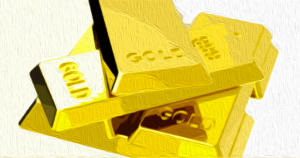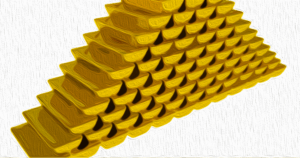
Bitcoin's price dynamics as of Dec. 15, 2023, present an intriguing narrative, characterized by a combination of bullish trends and nuanced fluctuations. Following the U.S. Federal Reserve meeting on Wednesday, BTC's price experienced an improvement but has since entered a period of tight consolidation.
Bitcoin Price and Market Overview
As of Friday, bitcoin (BTC) is priced at $42,696, with a 24-hour range between $42,067 and $43,329, indicating moderate volatility. The market capitalization currently stands at $835 billion, supported by a significant 24-hour trading volume of $24.86 billion. Although BTC has experienced a 2.2% decline over the past week, it has shown a 10.7% increase against the U.S. dollar.
Oscillators and Market Sentiment
Oscillators, essential tools for assessing market momentum, present a mixed but generally neutral perspective. The relative strength index (RSI) currently stands at 51, indicating a balanced market sentiment without any overbought or oversold conditions. The Stochastic oscillator aligns with a neutral perspective at 65. However, the commodity channel index (CCI) dips to -71, suggesting a bearish undercurrent while still remaining within the neutral zone.
Moving Averages and Market Trends
Moving averages play a critical role in understanding market trends across short and long-term time frames. In the case of BTC, shorter-term exponential (EMA) and simple moving averages (SMA) for 10 and 20-day periods lean towards a bearish signal, reflecting the recent downtrend. However, longer-term EMAs and SMAs for 30, 50, 100, and 200-day periods mostly indicate a bullish undertone over an extended period. This disparity between short and long-term perspectives highlights the complexity of the current market dynamics.
Support and Resistance Levels
The daily chart analysis reinforces a bullish trend, characterized by higher highs and lows, interrupted by occasional pullbacks. Key support and resistance levels are identified at approximately $35,651 and $44,729, respectively. These levels, combined with significant trading volumes during substantial price movements, validate the current trend and provide insights for potential entry and exit points.
Granular View: 4-Hour Chart
On the 4-hour chart, a more detailed and fluctuating scenario emerges. Despite the overall uptrend, this timeframe reveals increased sideways movement, with a recent large red candle indicating potential selling pressure. Short-term support and resistance levels are observed around $40,181 and $43,440. This chart offers a more immediate view of the market, crucial for intra-day traders and those seeking to capitalize on short-term price fluctuations.
Bull Verdict
The data and trends observed on Dec. 15, 2023, suggest a bullish outlook for Bitcoin. The daily chart's pattern of higher highs and lows, supported by positive signals from longer-term moving averages, indicates a strong underlying market strength and optimism. Moderate volatility and substantial trading volume further reinforce this positive sentiment, suggesting a likelihood of sustained upward momentum in the near future.
Bear Verdict
Conversely, the bearish viewpoint is based on short-term signals and potential vulnerabilities in the Bitcoin market as of Dec. 15, 2023. The 4-hour chart's increased sideways movement and the recent large red candle, combined with sell signals from shorter-term moving averages, indicate potential selling pressure and short-term bearishness.
Frequently Asked Questions
What Should Your IRA Include in Precious Metals?
It's important to understand that precious metals aren't only for wealthy people. You don’t need to have a lot of money to invest. There are many methods to make money off of silver and gold investments.
You might think about buying physical coins such a bullion bar or round. Stocks in companies that produce precious materials could be purchased. You might also want to use an IRA rollover program offered through your retirement plan provider.
Regardless of your choice, you'll still benefit from owning precious metals. Even though they aren't stocks, they still offer the possibility of long-term growth.
Their prices rise with time, which is a different to traditional investments. If you decide to sell your investment, you will likely make more than with traditional investments.
How can you withdraw from an IRA of Precious Metals?
First decide if your IRA account allows you to withdraw funds. After that, you need to decide if you want to withdraw funds from an IRA account. Next, make sure you have enough money in order for you pay any fees or penalties.
A taxable brokerage account is a better option than an IRA if you are prepared to pay a penalty for early withdrawals. This option will require you to pay taxes on the amount that you withdraw.
Next, determine how much money you plan to withdraw from your IRA. This calculation is affected by many factors, such as the age at which you withdraw the money, the amount of time the account has been owned, and whether your plans to continue contributing to your retirement fund.
Once you know how much of your total savings to convert to cash, it's time to choose the type of IRA that you want. Traditional IRAs let you withdraw money tax-free after you turn 59 1/2, while Roth IRAs require you to pay income taxes upfront but allow you access the earnings later without paying any additional taxes.
Once these calculations have been completed you will need to open an account with a brokerage. Most brokers offer free signup bonuses and other promotions to entice people to open accounts. However, a debit card is better than a card. This will save you unnecessary fees.
When it comes time to withdraw your precious metal IRA funds, you will need a safe location where you can keep your coins. Some storage facilities will take bullion bars while others require you only to purchase individual coins. Either way, you'll need to weigh the pros and cons of each before choosing one.
Bullion bars require less space, as they don't contain individual coins. But you will have to count each coin separately. However, you can easily track the value of individual coins by storing them in separate containers.
Some people prefer to keep their coins in a vault. Some prefer to keep them in a vault. Regardless of the method you prefer, ensure that your bullion is safe so that you can continue to enjoy its benefits for many years.
What is the best way to hold physical gold?
Gold is money, not just paper currency or coinage. People have been using gold for thousands of years to store their wealth and protect it from economic instability and inflation. Today, investors use gold as part of a diversified portfolio because gold tends to do better during financial turmoil.
Today, Americans prefer precious metals like silver and gold to stocks and bonds. Although owning gold does not guarantee that you will make money investing in it, there are many reasons to consider adding gold into your retirement portfolio.
Gold has historically performed better during financial panics than other assets. The S&P 500 declined 21 percent during the same period. Gold prices increased nearly 100 per cent between August 2011 – early 2013. Gold was one asset that outperformed stocks in turbulent market conditions.
Another benefit to investing in gold? It has virtually zero counterparty exposure. Your stock portfolio can fall, but you will still own your shares. But if you own gold, its value will increase even if the company you invested in defaults on its debt.
Finally, gold is liquid. This allows you to sell your gold whenever you want, unlike many other investments. The liquidity of gold makes it a good investment. This allows one to take advantage short-term fluctuations within the gold price.
Can I own a gold ETF inside a Roth IRA
A 401(k) plan may not offer this option, but you should consider other options, such as an Individual Retirement Account (IRA).
An IRA traditional allows both employees and employers to contribute. An Employee Stock Ownership Plan (ESOP) is another way to invest in publicly traded companies.
An ESOP is a tax-saving tool because employees have a share of company stock as well as the profits that the business generates. The money in the ESOP can then be subject to lower tax rates than if the money were in the individual's hands.
You can also get an Individual Retirement Annuity, or IRA. With an IRA, you make regular payments to yourself throughout your lifetime and receive income during retirement. Contributions made to IRAs are not taxable.
What is a Precious Metal IRA?
A precious metal IRA lets you diversify your retirement savings to include gold, silver, palladium, rhodium, iridium, osmium, osmium, rhodium, iridium and other rare metallics. These precious metals are extremely rare and valuable. They are great investments for your money, and they can protect you from inflation or economic instability.
Precious metals are sometimes called “bullion.” Bullion refers simply to the physical metal.
Bullion can be purchased via a variety of channels including online sellers, large coin dealers, and grocery stores.
A precious metal IRA lets you invest in bullion direct, instead of purchasing stock. This ensures that you will receive dividends each and every year.
Precious metal IRAs do not require paperwork nor annual fees, unlike regular IRAs. You pay only a small percentage of your gains tax. Additionally, you have access to your funds at no cost whenever you need them.
Who is the owner of the gold in a gold IRA
The IRS considers anyone who owns gold to be “a form money” and therefore subject to taxation.
To take advantage of this tax-free status, you must own at least $10,000 worth of gold and have been storing it for at least five years.
While gold may be a great investment to help prevent inflation and volatility in the market, it's not wise to keep it if you won't use it.
If you plan on selling the gold someday, you'll need to report its value, which could affect how much capital gains taxes you owe when you cash in your investments.
A financial planner or accountant should be consulted to discuss your options.
Statistics
- The price of gold jumped 131 percent from late 2007 to September 2011, when it hit a high of $1,921 an ounce, according to the World Gold Council. (aarp.org)
- If you accidentally make an improper transaction, the IRS will disallow it and count it as a withdrawal, so you would owe income tax on the item's value and, if you are younger than 59 ½, an additional 10% early withdrawal penalty. (forbes.com)
- This is a 15% margin that has shown no stable direction of growth but fluctuates seemingly at random. (smartasset.com)
- If you take distributions before hitting 59.5, you'll owe a 10% penalty on the amount withdrawn. (lendedu.com)
- Gold is considered a collectible, and profits from a sale are taxed at a maximum rate of 28 percent. (aarp.org)
External Links
irs.gov
bbb.org
finance.yahoo.com
law.cornell.edu
- 7 U.S. Code SS7 – Designation Boards of Trade as Contract Markets
- 26 U.S. Code SS 408 – Individual retirement plans
How To
Tips for Investing in Gold
Investing in Gold remains one of the most preferred investment strategies. There are many advantages to investing in Gold. There are many ways to invest gold. There are many ways to invest in gold. Some prefer buying physical gold coins while others prefer gold ETFs (Exchange Traded Funds).
Before you buy any type of gold, there are some things that you should think about.
- First, make sure you check if your country allows you own gold. If so, then you can proceed. Or, you might consider buying gold overseas.
- Second, it is important to know which type of gold coin you are looking for. You can choose between yellow gold and white gold as well as rose gold.
- The third factor to consider is the price for gold. Start small and build up. Diversifying your portfolio is a key thing to remember when purchasing gold. You should invest in different assets such as stocks, bonds, real estate, mutual funds, and commodities.
- Remember that gold prices are subject to change regularly. You need to keep up with current trends.
—————————————————————————————————————————————————————————————-
By: Jamie Redman
Title: Bitcoin Technical Analysis: BTC’s Consolidation Phase Signals Cautious Market Approach
Sourced From: news.bitcoin.com/bitcoin-technical-analysis-btcs-consolidation-phase-signals-cautious-market-approach/
Published Date: Fri, 15 Dec 2023 13:30:48 +0000













